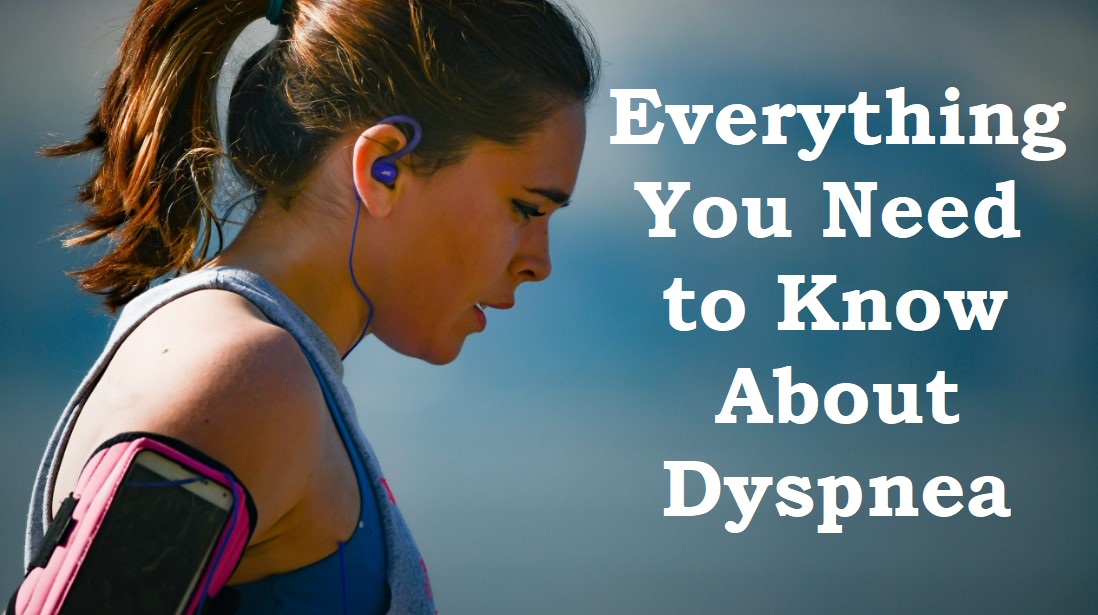Dyspnea, also known as windedness, is an inability to breathe enough air into your lungs. During this time, you may also feel tight in your chest.
This windedness can be a side effect of a medical issue, usually associated with heart or lung infection. While this is true, you can also experience impermanent dyspnea after extreme exercise or physical activity.

Table of Contents
Symptoms of Dyspnea
Breathing issues can result from overexertion in healthy individuals.
Dyspnea can occur because of overexertion, exerting energy at high elevation, or as a side effect of the scope of conditions.
Signs that an individual is experiencing dyspnea include:
- windedness after exercise or because of an ailment
- feeling smothered or choked because of breathing challenges
- worked relaxing
- snugness in the chest
- quick, shallow relaxing
- heart palpitations
- wheezing
- hacking
Assuming dyspnea happens out of nowhere or the side effects are extreme, it could be an indication of a genuine ailment.
How could it be analyzed?
Specialists will first assess your aviation routes, breathing, and circulation to decide whether you require prompt crisis care.
On the off chance that this isn’t true, they will perform a series of tests to track down the reason for your dyspnea. These may include:
- actual assessment
- a survey of clinical history
- imaging filters
- blood tests
- lung work tests (spirometry)
- beat oximetry
During an actual test, specialists will gauge your heartbeat, respiration rate, body weight, and internal heat level. A high temperature might indicate that a fever is causing dyspnea, while an unusual heartbeat might indicate a basic heart condition.
A chest X-beam is usually the first analytic advance in determining whether lung or heart complexities are causing dyspnea. Specialists may also perform computed tomography (CT) checks during the examination. These outputs can show:
- pneumonia
- pneumonic embolism
- pleural radiations
- cancers
- interstitial lung infection
If the tests above don’t uncover the condition’s objective, specialists might utilize echocardiogram and electrocardiogram imaging to examine the heart further. They may also want to determine your general lung strength and blood oxygen levels through lung work tests and heartbeat oximetry.
Treatment
Oxygen treatment might be essential in certain conditions.
Treatment will be determined by the cause of the issue. An individual who is winded because of overexertion will presumably get their breath back once they pause and unwind.
Furthermore, in some cases, supplemental oxygen will be required. Those with asthma or COPD might have a breathed-in salvage bronchodilator to use when necessary.
For those with constant medical conditions, such as COPD, a medical services provider will work with the person to assist them with breathing more comfortably.
This will include fostering a treatment plan that assists with forestalling intense episodes and dialing back movement of the general illness.
Assuming that dyspnea is connected to asthma, it usually responds well to prescriptions like bronchodilators and steroids.
In cases where it is because of contamination, for example, bacterial pneumonia, anti-toxins can bring relief.
Different meds, like narcotics, non-steroidal calming drugs (NSAIDs), and anti-anxiety medications can also be highly addictive.
Breathing inconveniences coming from COPD can improve with creative breathing strategies, for example, tightened lips while breathing muscle strengthening exercises.
Individuals can figure out how to do these in pneumonic recovery programs.
The Dyspnea Lab, an examination community with some expertise in windedness, reports that individuals find these projects accommodating, regardless of whether the underlying drivers of the issue remain.
Assuming that tests demonstrate low levels of oxygen in the blood, supplemental oxygen might be provided. In any case, not every person with windedness will have low blood oxygen levels.
As per the Dyspnea Lab, many individuals with dyspnea find that a delicate stream of cool air around the head and face works on their side effects.
What are the Risk Factors for Dyspnea?
Windedness is an ordinary side effect during serious activity or effort. Assuming that it happens while the patient is very still — or during unexpected circumstances — it tends to be a side effect of a genuine ailment. On the off chance that you experience the ill effects of dyspnea, you may also suffer from the following medical problems:
- Coronary illness
- Respiratory contamination or pneumonia
- Disease, particularly cellular breakdown in the lungs
- Emphysema or ongoing bronchitis
- Asthma
- Sensitivities
- Reflux
- Corpulence
Prevention of Dyspnea
Stopping or abstaining from smoking is imperative for preventing respiratory issues.
People with dyspnea can extend to great lengths to work on their general well-being and give themselves more space to breathe.
These include:
- stopping smoking
- Preventing the use of recycled smoke where conceivable
- Staying away from other ecological triggers, such as substance vapor and wood smoke
- getting thinner, as this can decrease weight on the heart and lungs and make it more straightforward to exercise, both of which can strengthen the cardiovascular and respiratory frameworks
- take time changing elevations, slip into exercises continuously, and decrease practice levels at elevations over 5,000 feet
FAQs
Encountering windedness (dyspnea) or other breathing problems can be frightening. However, it’s not an unusual side effect of uneasiness. The majority of individuals say that a side effect affecting their breathing must result from an underlying problem.
Dyspnea, likewise called windedness, is a tightness in your chest where you will be unable to take a full breath. This is a side effect that connects to a wide range of conditions, including asthma, cardiovascular breakdown, and lung infection.
Dyspnea is treated by addressing the underlying infection or condition. For instance, assuming that dyspnea is brought about by pleural radiation, emptying liquid inside the chest can decrease windedness. Depending on the reason, dyspnea can either be treated with a drug or by careful management.
